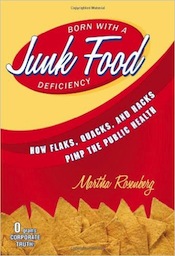Big Pharma’s Profiteers: You Want Us to Pay What for These Meds?
HEALTH, 3 Aug 2015
Martha Rosenberg - CounterPunch
27 Jul 2015 – It is no secret that the pill profit party is over for drug companies. Bestselling pills like Lipitor, Seroquel, Zyprexa, Singular, Concerta, Cymbalta and Abilify have gone off patent and Wall Street is moving on to industries that offer better returns.
To combat investor disenchantment, drug companies have rolled out expensive drugs that treat such rare conditions, they almost sound like satire. If you are sleepy during the day, you may have narcolepsy says Jazz Pharmaceuticals which its drug Xyrem treats for $35,000 per year. If you have frequent diarrhea, gas and bloating, you may have exocrine pancreatic insufficiency says AbbVie to sell the drug Creon.
Drug makers are even not above scaring the populace if it sells drugs for rare diseases. Your back pain may not be from working out at all but from a disease called ankylosing spondylitis, says AbbVie, a condition that can be treated with its biologic drug Humira for as much as $20,000 a year. (Injectable “biologic” drugs are a new drug industry push because they are so expensive and less susceptible to generic competition than pills.)
The drug industry is also trying to stay a Wall Street darling with new, uber priced drugs—notably hepatitis C drugs. Gilead Sciences sold $12.4 billion worth of Sovaldi at $1000 a pill last year, reports the New York Times “straining the budgets of insurance companies and Medicaid programs.”
While drug company representatives initially tried to cast the outrageous prices as recouping their research and development costs they quickly back pedaled into admitting the drugs are priced on “value”—what they are “worth” for the patient’s health. Needless to say such valuations come pretty close to the definition of extortion—or offers you “can’t refuse.”
 Even business writers cry foul. Why does the same hepatitis C drug that costs $84,000 a year in the US cost $900 a year in Egypt asked Forbes staff writer Avik Roy. Since most hepatitis C patients in the US are uninsured, underinsured or imprisoned, taxpayers pick up the bill through Medicaid, the VA and prison systems writes Roy.
Even business writers cry foul. Why does the same hepatitis C drug that costs $84,000 a year in the US cost $900 a year in Egypt asked Forbes staff writer Avik Roy. Since most hepatitis C patients in the US are uninsured, underinsured or imprisoned, taxpayers pick up the bill through Medicaid, the VA and prison systems writes Roy.
Now Sanofi and Regeneron Pharmaceuticals are rolling out a cholesterol lowering drug which could be embraced by the millions who made the statin Lipitor the best selling drug in the world before it went off patent. Yet the list price of Praluent, an injectable biologic, is over $14,600 a year. Like Gilead, Sanofi and Regeneron say the price reflects what it is worth in potential benefits to patients and savings to the health care system—e.g. what they can get.
Nor is cost the only question with the new cholesterol drug. Increasingly, high bad cholesterol is viewed as a weak cardiovascular risk factor versus other factors like inflammation. Cholesterol lowering drugs can also be used to duck important lifestyle changes. “Plenty of adults down statins regularly and shine off healthy eating because they know a cheeseburger and steak can’t fool a statin,” writes Dr. Michael J. Breus on the Huffington Post.
Luckily, lawmakers are demanding cost breakdowns from drug companies on the new four-digit priced drugs. How much are true costs and what is profiteering? Some states are drafting bills that would allow insurers to refuse to pay for a drug if the manufacturer did not file the required cost breakdown reports.
What is the response of drug makers to bills addressing expensive drugs? They would be costly to comply with, they say.
______________________________
Martha Rosenberg is an investigative health reporter. She is the author of Born With A Junk Food Deficiency: How Flaks, Quacks and Hacks Pimp The Public Health (Prometheus).
Go to Original – counerpunch.org
DISCLAIMER: The statements, views and opinions expressed in pieces republished here are solely those of the authors and do not necessarily represent those of TMS. In accordance with title 17 U.S.C. section 107, this material is distributed without profit to those who have expressed a prior interest in receiving the included information for research and educational purposes. TMS has no affiliation whatsoever with the originator of this article nor is TMS endorsed or sponsored by the originator. “GO TO ORIGINAL” links are provided as a convenience to our readers and allow for verification of authenticity. However, as originating pages are often updated by their originating host sites, the versions posted may not match the versions our readers view when clicking the “GO TO ORIGINAL” links. This site contains copyrighted material the use of which has not always been specifically authorized by the copyright owner. We are making such material available in our efforts to advance understanding of environmental, political, human rights, economic, democracy, scientific, and social justice issues, etc. We believe this constitutes a ‘fair use’ of any such copyrighted material as provided for in section 107 of the US Copyright Law. In accordance with Title 17 U.S.C. Section 107, the material on this site is distributed without profit to those who have expressed a prior interest in receiving the included information for research and educational purposes. For more information go to: http://www.law.cornell.edu/uscode/17/107.shtml. If you wish to use copyrighted material from this site for purposes of your own that go beyond ‘fair use’, you must obtain permission from the copyright owner.